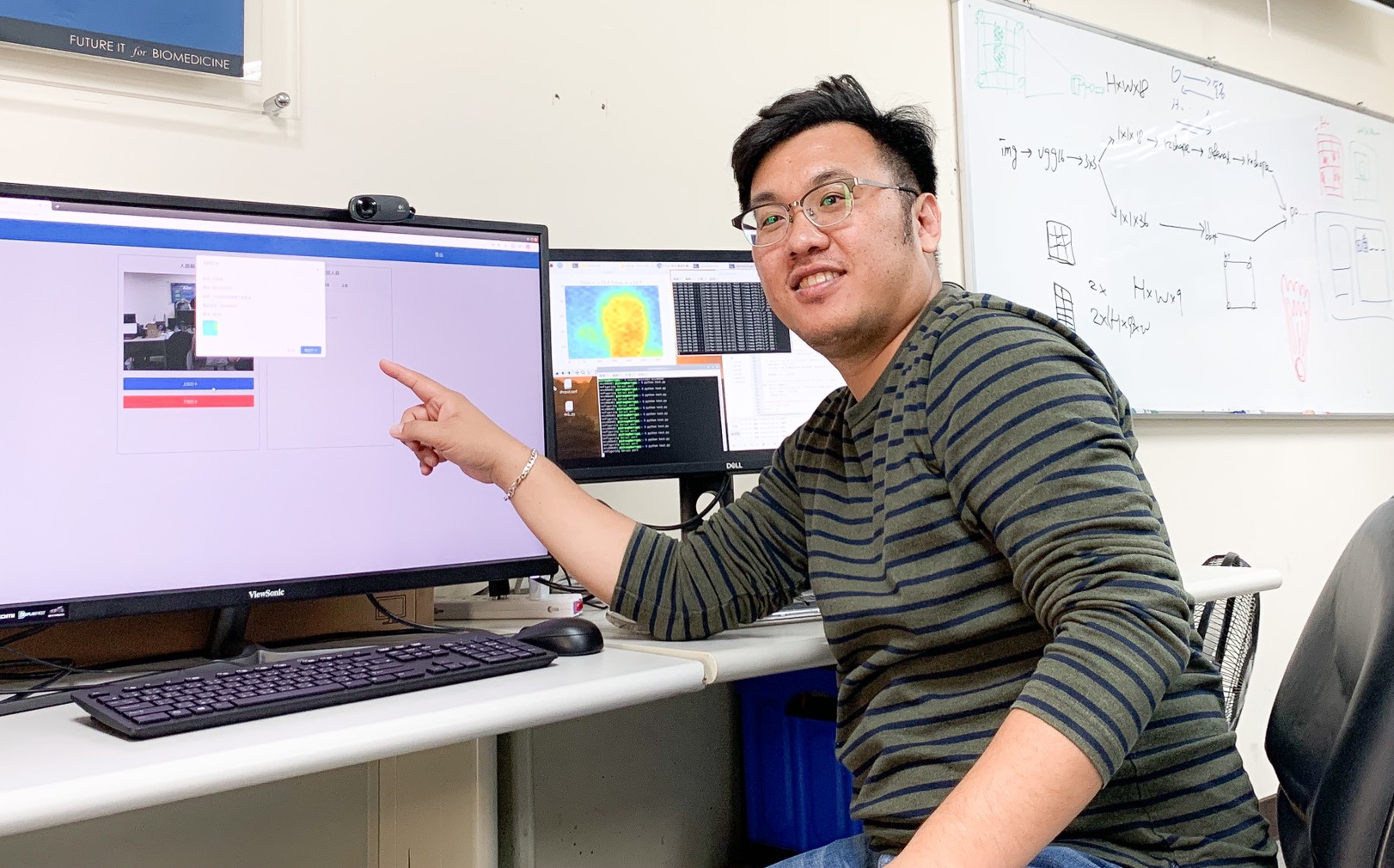The face recognition system is capable of recognizing faces of people even with masks with 95% accuracy.
As the number of infected patients greatly increased, people are suggested by the government to wear a face mask in public to reduce the spread of the disease. Prof. Chao-Neng Wang at the Department of Bioinformatics and Medical Engineering at Asia University (AU) and his research team developed a face recognition system integrated with AI detection technologies and temperature sensors, which can measure individuals’ body temperatures even when they were wearing a mask. In addition, tested using hundreds of image sets, this system has successful performances of recognizing faces with 95% accuracy. During the epidemic prevention period, AU has set up quarantine stations at the entrance of each building. The faculty members and students are asked to complete a health declaration form with their body temperatures taken using an infrared thermal imager every day before entering in-door spaces. To improve the issue, Prof. Wang and his team consisting of six students from the Departments of Bioinformatics and Medical Engineering, Computer Science and Information Engineering, and Photonics and Communication Engineering developed the face recognition system using a sample database of about one million unmasked face images and a much smaller database of masked face images. Successfully, this system has been tested to identify people in one second with 95% accuracy even if they are wearing medical masks.
“With the person’s facial details based on this system, the management personnel are provided with a full range of epidemic prevention information such as body temperatures and employee identities,” said Prof. Wang. Moreover, this system is capable of identifying visitors and guests after completing face verifications and identity registrations. Prof. Wang emphasized that when an employee whose body temperature is above 37.5˚C, the system can show up a warning sign in the computer to help the person get protective measures quickly. Currently, every one at AU has to fill in a self-declaration health statement and provide his/her travel and contact history accurately through a website. Also, people are required to pass daily temperature screening at building entrances before entering workplaces or classes. Facing the COVID-19 outbreak, AU faculty and students use the face recognition technology to identify users even when they are wearing masks. This recognition technology can provide a fast and zero-contact method for identifying individuals. In the near future, the (a) face recognition system will become popular as an identification tool and can be applied in various activities.
|

 OFFICE OF ACADEMIC AFFAIRS-Student Internship and Learning Guidance Division
OFFICE OF ACADEMIC AFFAIRS-Student Internship and Learning Guidance Division

